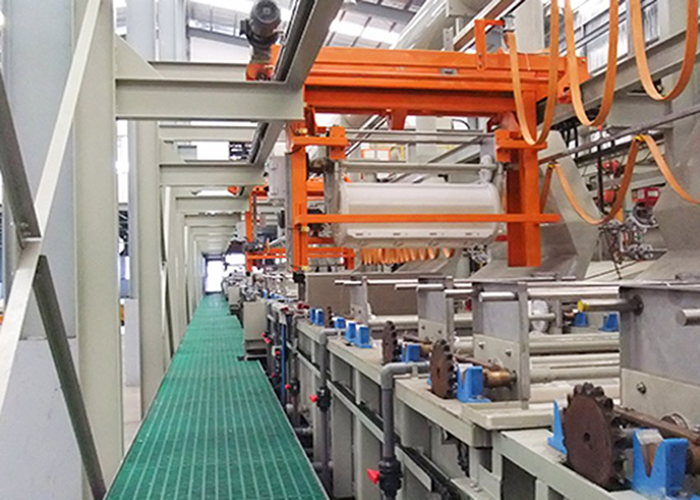Complete Water and Wastewater Treatment Solutions for Electroplating Industries Using STP, ETP, WTP, WWTP, RO, and Industrial Systems

Electroplating plays a vital role in India's manufacturing landscape. From automotive to electronics and hardware to aerospace, countless industries depend on surface finishing and metal coating. Major industrial zones across the country host hundreds of small to large electroplating units. The demand for corrosion-resistant, aesthetic, and durable metal products continues to fuel this sector's growth.
Maharashtra, with its robust industrial infrastructure, especially in Mumbai, Pune, Nashik, and Aurangabad, is home to a significant number of electroplating units. These industries contribute to the economy but also face increasing scrutiny due to their chemical-intensive processes. As environmental norms tighten, electroplating units must modernize wastewater handling practices to ensure long-term sustainability.
Electroplating processes require large volumes of water for rinsing, cleaning, and chemical baths.
Water is indispensable in electroplating operations. It is primarily used in cleaning, degreasing, pickling, and rinsing metal components before and after they are dipped into plating baths. The water used must be free from impurities to avoid affecting coating quality.
In addition to direct contact processes, water is used in cooling systems, chemical dilution, and equipment cleaning. Rinse tanks require continuous flow or recirculation of clean water to prevent cross-contamination. The more precise the plating application, the higher the demand for consistent and purified water. This makes water treatment critical to product quality and process efficiency.
Pre-treatment, rinsing, plating, and post-treatment operations produce chemically contaminated wastewater streams.
Wastewater in electroplating industries is generated during several key stages. The cleaning and degreasing process releases oil, grease, and detergents into the water stream. Acid pickling is used to remove oxides and scale from metals, releasing strong acids and dissolved metals into the water.
"Water is both a tool and a carrier in electroplating industries. Its purity defines the coating quality, while its treatment defines environmental responsibility. Efficient water management isn't just about compliance—it's about protecting ecosystems, reducing costs, and ensuring the industry's sustainable growth in a competitive and environmentally conscious global market."
The actual electroplating bath contributes significantly to wastewater contamination. During rinsing after plating, heavy metals like chromium, nickel, zinc, copper, and cyanide compounds are introduced into wastewater. Post-treatment steps like passivation and sealing also generate effluent containing a variety of toxic and non-biodegradable chemicals that need careful handling and treatment.
Wastewater contains heavy metals, acids, alkalis, solvents, cyanides, and complex organic and inorganic pollutants.
Electroplating wastewater is complex and often classified as hazardous. It contains high concentrations of heavy metals such as chromium, nickel, cadmium, and copper. Many of these metals are toxic and non-biodegradable, posing long-term environmental risks if not treated properly.
Acid and alkaline wastes are also ordinary due to cleaning and pickling operations. Cyanide-bearing effluents from specific plating processes require special treatment. Additionally, surfactants, solvents, and chelating agents contribute to the chemical load. These waste streams have high COD, TDS, and varying pH levels, making them challenging to treat without proper segregation and tailored solutions.
ETPs use chemical, physical, and biological methods to neutralize and remove contaminants from effluent.
Electroplating industries rely on dedicated Effluent Treatment Plants (ETPs) to manage their wastewater. The treatment typically begins with pH correction, followed by chemical precipitation to remove heavy metals. Coagulants and flocculants help in settling suspended solids..
For cyanide-containing effluents, alkaline chlorination is used to neutralize toxicity. After primary treatment, filtration systems like sand filters or activated carbon are employed for polishing. In many cases, the sludge generated is dewatered and sent for proper disposal. Biological treatment may also be used for biodegradable components, while final treated water is often suitable for reuse or compliant discharge.
RO, MBR, ZLD, and automation systems are helping electroplating industries achieve sustainable water management.
Advanced technologies are making it easier for electroplating units to reuse water and reduce dependency on fresh supplies. Reverse Osmosis (RO) is widely adopted after tertiary treatment to reclaim purified water. This not only saves costs but also reduces the environmental footprint of operations.
Membrane Bioreactors (MBRs) are used in combination with biological treatment for better efficiency. Zero Liquid Discharge (ZLD) systems are gaining popularity, especially where discharge regulations are strict. Integration of automation and real-time monitoring ensures treatment plants operate efficiently with minimal human intervention, enabling consistency and long-term environmental compliance.
Tailored water treatment systems to meet stringent regulatory norms and industry-specific challenges
We offer end-to-end solutions for water and wastewater treatment specific to the electroplating sector. Our services include the design, installation, and maintenance of ETPs, WTPs, RO systems, and Zero Liquid Discharge plants. We conduct site-specific analysis to propose efficient, compact, and cost-effective systems that ensure regulatory compliance.
Our technical team provides support for chemical dosing, sludge management, and system automation. Whether you are upgrading an old system or setting up a new unit, we bring expertise and practical knowledge to deliver the best outcomes. We aim to help clients reduce environmental risk and operational expenses through sustainable water practices.
Conclusion: Sustainable Water Treatment is Essential for Electroplating Industry's Future

Conclusion: Sustainable Water Treatment is Essential for Electroplating Industry's Future
Electroplating industries are under increasing pressure to manage their wastewater responsibly. With high volumes of hazardous effluents and tightening environmental standards, the importance of having robust treatment systems cannot be overstated. ETPs, RO units, and ZLD technologies are no longer optional—they're business essentials..
By adopting modern, energy-efficient, and automated treatment systems, electroplating units can not only ensure compliance but also recycle water, reduce costs, and protect the environment. As a trusted partner, we offer reliable and industry-specific water treatment solutions that align with your production needs and sustainability goals.

